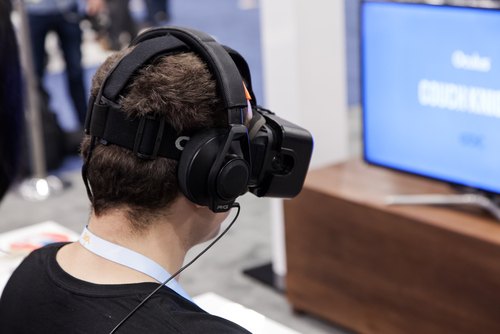Key Takeaways:
• Affordable virtual reality setups help students with intellectual disabilities practice real-world tasks safely.
• Hands-on VR learning boosts confidence and supports independence.
• AI personalization and job training expand VR’s impact for diverse learners.
• Educator training and tech support remain critical challenges.
• Virtual reality promises more equal education for neurodivergent students.
Virtual Reality Helps Students with Disabilities
Researchers at Michigan State University tested affordable virtual reality tools with high school students who have intellectual disabilities. These setups cost a few hundred dollars, not thousands. Therefore, more schools could join the program. The goal was simple: use virtual reality to let students practice life skills in a safe space. As a result, students improved in everyday tasks.
The team created virtual environments where learners could shop, cross streets, cook meals, and handle money. Moreover, they used familiar scenarios based on local stores and streets. This approach made students feel at ease. Because the technology mimics real life, it bridges the gap between practice and the real world.
How Virtual Reality Teaches Life Skills
First, students put on a headset and enter a realistic shop. Then they select items, check prices, and pay with virtual cash or cards. Next, they navigate sidewalks and wait for lights to change. Meanwhile, they cook simple meals in a virtual kitchen with timers and safety rules. Finally, they visit an ATM to withdraw money and make change.
Each session lasted about thirty minutes. After each run, instructors offered feedback. Since no real money was at risk, students felt less pressure. As a result, they practiced more often and learned faster. In addition, the setups tracked each action for review. This data let teachers spot errors early and guide students better.
Boosting Confidence and Independence
After several weeks, students showed clear gains. Many felt more confident when they tried the same tasks outside school. For example, one student made a smoothie at home after mastering the virtual blender. Another walked safely across a busy street with a friend. These wins made students proud. Therefore, they tried new activities without fear.
Instructors noticed higher self-esteem and social interaction. Students spoke more clearly about their goals and daily needs. Furthermore, they asked questions and helped classmates. As independence grew, families reported fewer support calls. Thus, virtual reality did more than teach skills. It built self-confidence that extended beyond the headset.
Wider Uses and AI Personalization
Beyond life skills, virtual reality can reshape job training. For example, students could learn to stock shelves in a grocery store or sort mail at a post office. Moreover, AI can customize scenarios for each learner. The system could adjust difficulty, pace, and hints based on performance. In this way, VR learning becomes highly personalized.
In addition, virtual reality can offer language practice and social skill coaching. A student could role-play a job interview, complete with polite greetings and eye contact tips. Meanwhile, AI analyzes speech patterns and suggests improvements. As a result, learners build work-ready skills in a safe setting. This method benefits both neurodivergent and neurotypical students.
Overcoming Challenges with Educator Training
However, virtual reality in the classroom faces hurdles. First, many teachers need training to run and maintain VR kits. Without support, hardware can collect dust. Therefore, schools need clear guides and tech help. Second, some educators worry about screen time and motion discomfort. To address this, MSU researchers limited sessions and designed simple interfaces.
In addition, budget constraints still matter. Although setups are affordable, districts must buy headsets, computers, and software. Moreover, they need space for safe movement. To overcome these gaps, schools may partner with local businesses or nonprofits. They can share costs and expertise. Meanwhile, professional development workshops can teach staff to use and repair VR tools.
The Future of Equitable Education
Looking ahead, virtual reality could level the playing field for all learners. As hardware prices fall, more schools can adopt this technology. Furthermore, open-source VR programs will let teachers create custom lessons. In turn, students with diverse needs gain tailored support. Ultimately, virtual reality can make classrooms more inclusive and engaging.
By combining low-cost equipment, AI personalization, and staff training, education can transform. Neurodivergent learners stand to benefit most, gaining skills that matter. As virtual reality continues to evolve, schools that embrace it will lead the way. They will empower students to live more confident and independent lives.
What is virtual reality and how is it used here?
Virtual reality is a digital environment you explore with a headset. In this program, students use it to practice tasks like shopping, cooking, and crossing streets. The safe setup lets them learn without real-world risks.
FAQs
Are these VR setups expensive?
No. The research used headsets and computers that cost a few hundred dollars each. Schools can afford them, especially with grants or community partnerships.
What challenges do educators face?
Teachers need training to set up and manage VR kits. They also need guidance on session length to prevent discomfort. Budget and space can pose hurdles, but partnerships and workshops help.
What future uses exist?
Virtual reality can expand into job training, language learning, and social skills coaching. With AI personalization, lessons adapt to each student’s pace and needs. This offers a more inclusive education for everyone.

